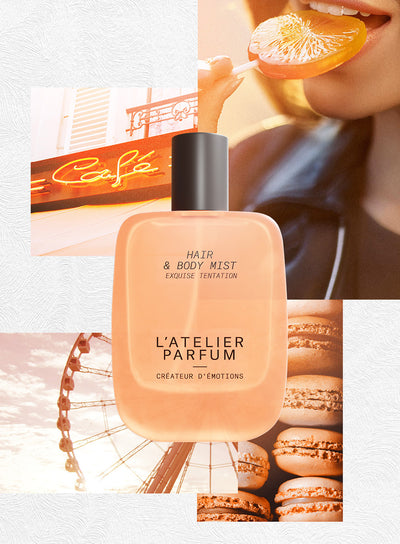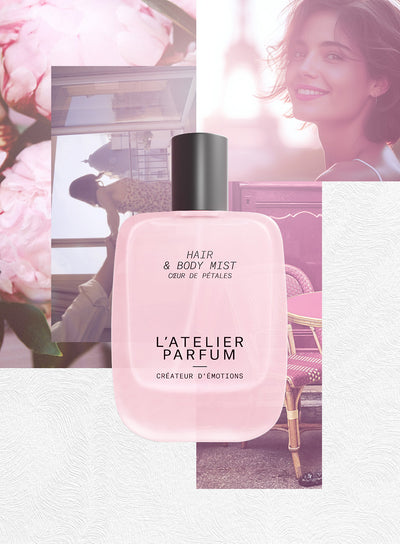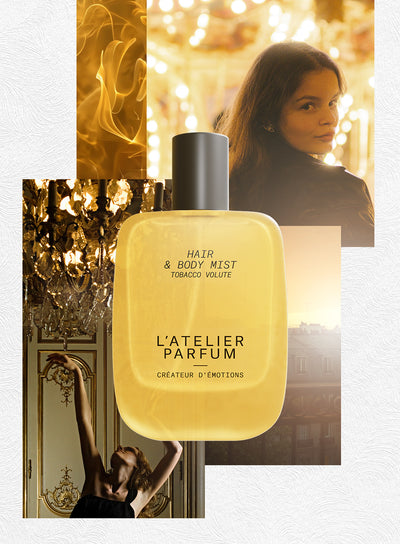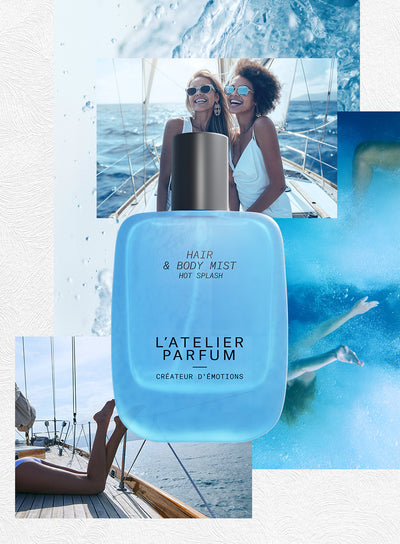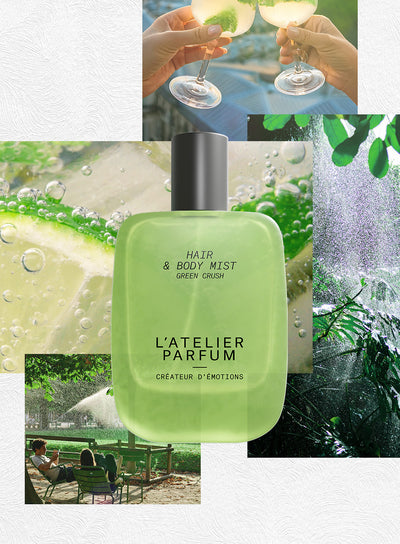Natural vs Synthetic Ingredients in Perfumery: A Question of Balance

In the world of perfumery, one of the most persistent debates swirls around the use of natural versus synthetic ingredients. Are naturals more authentic and luxurious? Are synthetics the villains of the fragrance world—or are they its silent heroes? The truth, as with most things in scent and science, is more nuanced.
A Rich Palette, Not a Duel
As beautifully phrased in a French reflection on the topic: "Il n’y a ni méchant, ni gentil, tout le monde a un rôle à jouer." There are no heroes or villains—just a symphony of materials, each contributing its unique character to the composition. Perfumery, after all, is an art that thrives on a diverse palette, combining essential oils, absolutes, and other natural extracts with an array of synthetic molecules, both bio-identical and lab-created.
The Nature of Naturals
Natural ingredients—drawn from flowers, fruits, woods, and resins—are often perceived as more "authentic" and luxurious. They carry with them an aura of craftsmanship and earthiness, making them a popular choice in niche and artisanal perfumes. However, they are not without their challenges.
Natural ingredients are complex chemical cocktails in themselves. An essential oil can contain dozens or even hundreds of different molecules. Their smell is not always true to the scent of the living plant, as the process of extraction (often involving heat or solvents) transforms their olfactory profile. Moreover, natural ingredients can vary from harvest to harvest, introducing a level of inconsistency that’s both an artisanal charm and a technical headache.
From a sustainability perspective, naturals also pose ethical and environmental concerns. Harvesting rare plants, overuse of land, or the exploitation of local communities can make the production of some naturals deeply problematic.
The Case for Synthetics
Synthetic ingredients, on the other hand, are often seen as the modern, controversial cousins in the perfume family. Yet their contribution is both foundational and revolutionary.
Many synthetics mimic molecules found in nature—like limonene from citrus or geraniol from roses—but they can also be entirely novel, like galaxolide (a musk) or ethyl-vanillin (a powerful vanilla note). These ingredients are not only more stable and cost-effective, but they also offer a level of olfactive precision and creativity that naturals cannot.
Synthetics allow perfumers to work with materials that are allergen-free, cruelty-free, and more sustainable than their natural counterparts. For instance, animal-derived ingredients like musk, once obtained through cruel practices, are now entirely replaced by synthetic analogues.
Furthermore, some synthetic molecules—like cis-3-hexenol, which smells like freshly cut grass, or aldehyde C14, with its creamy peach scent—are so vivid and complex that it's hard to believe they’re just one molecule. They offer the possibility of creating fragrances that are consistent, long-lasting, and globally accessible.
Rethinking “Natural” as “Better”
Natural doesn’t always mean better. In perfumery, “natural” can mean more allergens, less stability, and more environmental strain. Conversely, synthetics can enhance the longevity, clarity, and safety of a scent.
Besides, many modern perfumes are hybrids—smart blends of both natural and synthetic ingredients. This balance allows brands to maintain ethical and environmental responsibility while still creating rich, multi-faceted fragrances.
A New Way Forward
Ultimately, the question of natural versus synthetic is not about choosing sides, but about understanding how both serve the art and science of perfumery. As we become more conscious consumers, the focus should shift toward transparency, sustainability, and creativity.
Whether an ingredient was harvested from a flower field or designed in a lab, what truly matters is how it contributes to the olfactive experience. Just like a painter needs both oils and acrylics, a perfumer needs access to the full spectrum of materials to craft something truly magical.
So, next time you spritz on your favorite fragrance, don’t ask if it’s natural or synthetic—ask if it’s beautiful, meaningful, and respectful of the world it comes from.
A Rich Palette, Not a Duel
As beautifully phrased in a French reflection on the topic: "Il n’y a ni méchant, ni gentil, tout le monde a un rôle à jouer." There are no heroes or villains—just a symphony of materials, each contributing its unique character to the composition. Perfumery, after all, is an art that thrives on a diverse palette, combining essential oils, absolutes, and other natural extracts with an array of synthetic molecules, both bio-identical and lab-created.
The Nature of Naturals
Natural ingredients—drawn from flowers, fruits, woods, and resins—are often perceived as more "authentic" and luxurious. They carry with them an aura of craftsmanship and earthiness, making them a popular choice in niche and artisanal perfumes. However, they are not without their challenges.
Natural ingredients are complex chemical cocktails in themselves. An essential oil can contain dozens or even hundreds of different molecules. Their smell is not always true to the scent of the living plant, as the process of extraction (often involving heat or solvents) transforms their olfactory profile. Moreover, natural ingredients can vary from harvest to harvest, introducing a level of inconsistency that’s both an artisanal charm and a technical headache.
From a sustainability perspective, naturals also pose ethical and environmental concerns. Harvesting rare plants, overuse of land, or the exploitation of local communities can make the production of some naturals deeply problematic.
The Case for Synthetics
Synthetic ingredients, on the other hand, are often seen as the modern, controversial cousins in the perfume family. Yet their contribution is both foundational and revolutionary.
Many synthetics mimic molecules found in nature—like limonene from citrus or geraniol from roses—but they can also be entirely novel, like galaxolide (a musk) or ethyl-vanillin (a powerful vanilla note). These ingredients are not only more stable and cost-effective, but they also offer a level of olfactive precision and creativity that naturals cannot.
Synthetics allow perfumers to work with materials that are allergen-free, cruelty-free, and more sustainable than their natural counterparts. For instance, animal-derived ingredients like musk, once obtained through cruel practices, are now entirely replaced by synthetic analogues.
Furthermore, some synthetic molecules—like cis-3-hexenol, which smells like freshly cut grass, or aldehyde C14, with its creamy peach scent—are so vivid and complex that it's hard to believe they’re just one molecule. They offer the possibility of creating fragrances that are consistent, long-lasting, and globally accessible.
Rethinking “Natural” as “Better”
Natural doesn’t always mean better. In perfumery, “natural” can mean more allergens, less stability, and more environmental strain. Conversely, synthetics can enhance the longevity, clarity, and safety of a scent.
Besides, many modern perfumes are hybrids—smart blends of both natural and synthetic ingredients. This balance allows brands to maintain ethical and environmental responsibility while still creating rich, multi-faceted fragrances.
A New Way Forward
Ultimately, the question of natural versus synthetic is not about choosing sides, but about understanding how both serve the art and science of perfumery. As we become more conscious consumers, the focus should shift toward transparency, sustainability, and creativity.
Whether an ingredient was harvested from a flower field or designed in a lab, what truly matters is how it contributes to the olfactive experience. Just like a painter needs both oils and acrylics, a perfumer needs access to the full spectrum of materials to craft something truly magical.
So, next time you spritz on your favorite fragrance, don’t ask if it’s natural or synthetic—ask if it’s beautiful, meaningful, and respectful of the world it comes from.

